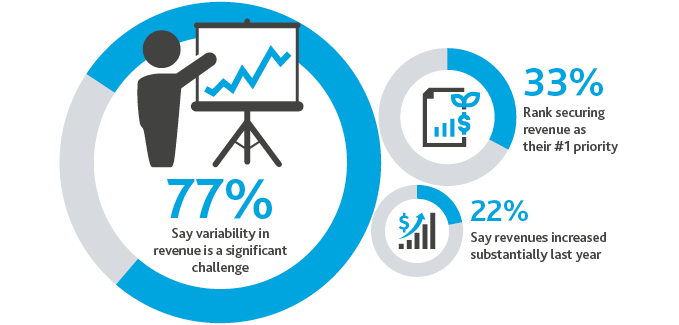On the Front Lines: Health and Human Services Organizations During COVID-19
Health and Human Services (HHS) organizations are often the boots on the ground direct care providers for some of our most vulnerable populations. These organizations provide essential services that are often the difference between life and death for those on the fringes of the traditional healthcare system.
For years these organizations have been experiencing increases in demand, while simultaneously combatting extreme inconsistency in government funding. These challenges have only been exacerbated by the emergence of the COVID-19 pandemic, which put these organizations on the front lines of a global crisis and exponentially increased the need for their services.
To drill down into specific challenges impacting HHS organizations, we analyzed their responses to our annual benchmarking survey.
Here are our top findings:
HHS Organizations are Divided on Performance
Despite the challenges they face, our survey found that nearly half of HHS organizations say they are able to maintain more than adequate funding and/or are experiencing growth. However, the survey was fielded just prior to the emergence of COVID-19 in the U.S., so it’s possible their optimism has dwindled. It’s also important to note that the majority of respondents identified as either surviving or struggling. For these HHS organizations, the events of 2020 have likely worsened their outlook even further.

Funding is Top Priority
HHS organizations are typically heavily dependent on governments and agencies for funding, but over the course of the past several years, funding cycles have been inconsistent at best, leaving many organizations struggling with prolonged financial uncertainty.

Organizations May be Falling into the Starvation Cycle
Many organizations prioritize spending on programs: Nearly all (95%) respondents report that 70%-99% of their expenditures are program-related. This often comes with a cost: Many organizations aren’t properly funding their internal infrastructure—functions like human resources, information technology and other critical functions.

Long-term underfunding in these areas creates unrealistic expectations around the true costs of running these organizations. This phenomenon is known as the “starvation cycle.”


Technology Helps Fuel Care
Despite funding issues, HHS organizations are still working to manage the myriad of challenges they face. From transitioning to a partially remote workforce to enabling telemedicine visits for rural populations, technology can assist HHS organizations in performing their vital work. With limited resources, it’s important that organizations choose to invest in the right technology resources that can help manage demand and/or lower costs.


For information on how to help your HHS organization during this time, please visit our Crisis Response Resource Center and subscribe to our nonprofit blog. For more findings from our annual benchmarking survey, download the full report.
SHARE